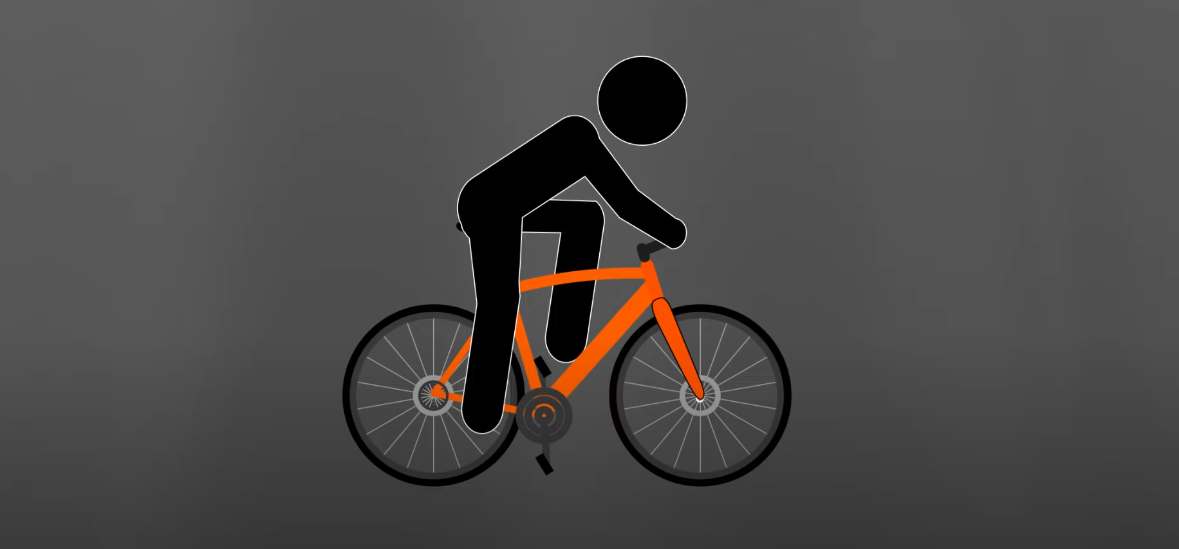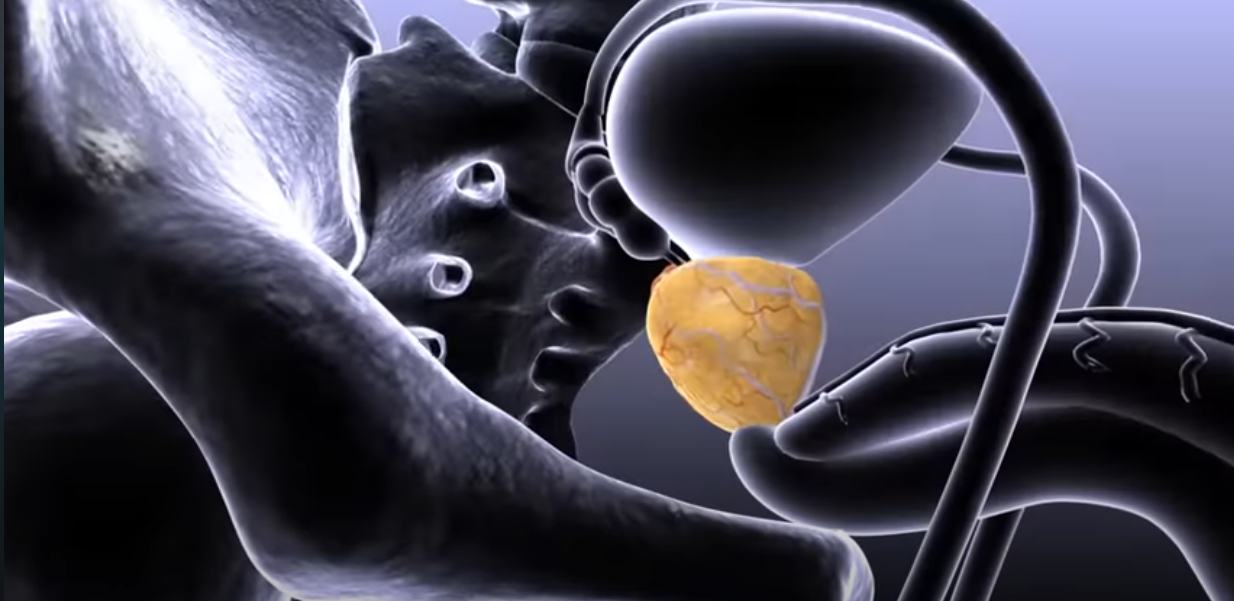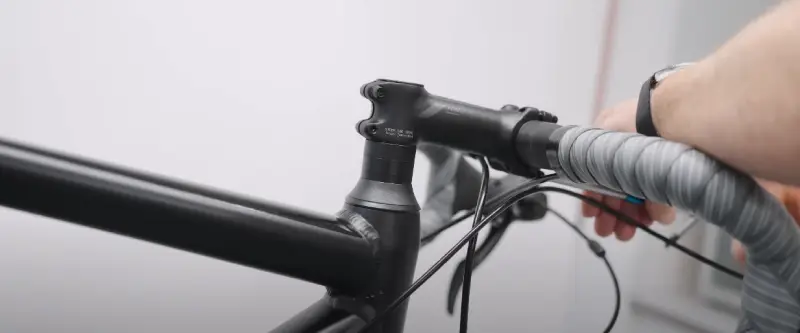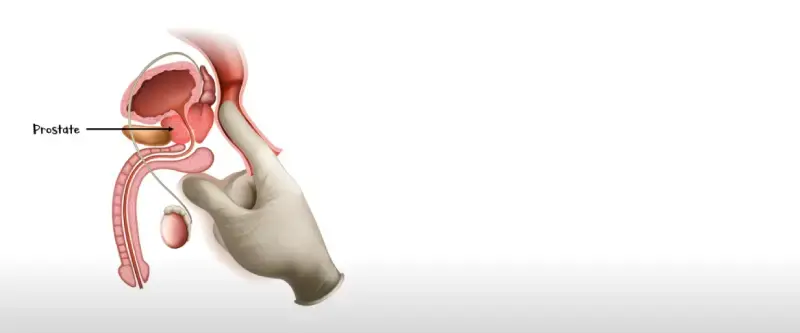BPH, or benign prostatic hyperplasia, is when the prostate gland grows larger with aging. It is non-cancerous and does not increase the risk of prostate cancer.
Yes, an enlarged prostate can cause pain in the back and legs when cycling due to pressure on nerves and tissues. This pain can resemble sciatic nerve pain from lower back problems. If experiencing these symptoms, consult a healthcare professional.
In this blog post, we’ll explore how an enlarged prostate can lead to back and leg pain during cycling.
Can Enlarged Prostate Cause Back & Leg Pain Cycling? 4 Signs

Cycling can sometimes cause discomfort, especially for men with prostate issues. We’ll explore the relationship between an enlarged prostate and cycling-related pain.
Prostate’s Function and Location
The prostate is a small gland in men that is part of the reproductive system. You’ll find it below the bladder and in front of the rectum. One of its primary functions is to produce a fluid that helps nourish and transport sperm.
How Cycling Affects the Prostate?
When you cycle, you sit a lot on a cycle seat. This can put a strain on the perineum, the area between the abdomen and the scrotum, which can affect the prostate. Here are some key points on how cycling might impact the prostate:
- Pressure and inflammation: Sitting on a cycle seat for long periods can lead to inflammation or irritation of the prostate. The cycle seat can press against the perineum, causing discomfort.
- Prolonged Sitting: Spending extended time on a cycle saddle can also restrict blood flow to the prostate area, potentially leading to swelling and pain.
Discomfort Due to Prolonged Sitting
If you have an enlarged prostate, prolonged sitting while cycling can worsen symptoms. Here’s why:
- Increased Pain: An enlarged prostate can already cause discomfort, and the added pressure from sitting can make it worse.
- Back and Leg Pain: The discomfort isn’t limited to the pelvic area. It can radiate to your lower back and legs, making cycling an uncomfortable experience.
Cycling And An Enlarged Prostate: Symptoms and Causes of Discomfort
A benign prostatic hyperplasia (BPH), or enlargement of the prostate, can cause several symptoms. These symptoms can make daily activities, including cycling, uncomfortable:
- Urinary Problems: This includes frequent urination, especially at night, difficulty starting urination, weak urine stream, and inability to completely empty the bladder.
- Pain and Discomfort: Men may experience pain in the lower abdomen, groin, or pelvic area.
Cycling Intensifies Symptoms
Cycling involves sitting on a narrow saddle and repetitive leg movements, which can worsen symptoms of an enlarged prostate. Here’s how cycling can make things worse:
- Pressure on the Perineum: The perineum is the area between the anus and the scrotum. Cycling puts pressure on this area, which can aggravate the prostate.
- Restricted Blood Flow: Prolonged pressure on the perineum can restrict blood flow, leading to inflammation and pain in the prostate region.
- Mechanics of Cycling: The forward-leaning position and leg movements during cycling can strain the lower back and legs, causing pain that can spread from the pelvic area.
Connection to Back and Leg Pain
When the prostate is enlarged and inflamed, it can cause discomfort that radiates to the back and legs. Here are some reasons this happens:
- Nerve Irritation: The prostate is close to several nerves. Inflammation can irritate these nerves, causing pain to spread to the lower back and legs.
- Muscle Strain: The discomfort from an enlarged prostate can cause men to change their posture while cycling, leading to muscle strain in the back and legs.
Back And Leg Pain From an Enlarged Prostate: Research Findings on Cycling and Prostate Health

Cycling is associated with concerns about prostate health. We will explore recent research findings on the relationship between cycling and prostate health, highlighting both risks and benefits.
Risks of Cycling for Prostate Health
A recent study examined the potential risks of cycling and prostate health. These risks include an increased likelihood of prostate cancer and concerns about infertility.
Studies on Prostate Cancer
Some studies suggest that long hours of cycling might be linked to a higher risk of prostate cancer.
- Key Findings: A study conducted in 2014 found that men who cycled more than 8.5 hours a week had a higher chance of
being diagnosed with prostate cancer. - Considerations: It’s important to note that genetics and lifestyle also affect prostate cancer risk.
Infertility Concerns
There is concern that prolonged cycling can impact male fertility.
- Key Findings: Research from a 2019 study suggested that excessive cycling could lead to reduced sperm quality due to increased scrotal temperature.
- Considerations: More research is needed to understand the full impact of cycling on fertility.
Benefits of Cycling for Prostate Health
Despite the risks, cycling offers several health benefits that can positively influence prostate health.
General Health Improvements
Cycling improves overall health, which indirectly benefits prostate health.
- Physical Fitness: Regular cycling helps improve cardiovascular health and overall fitness.
- Management of Weight: Maintaining a healthy weight can reduce the risk of prostate problems.
Prostate-Specific Benefits
Prostate health benefits of cycling include improved circulation and reduced stress levels.
- Circulation Improvement: Cycling can improve blood flow, which may help keep the prostate healthy.
- Stress Reduction: Exercise, including cycling, can help reduce stress levels, which is beneficial for prostate health.
4 Pain Management Strategies for Cyclists with Enlarged Prostates

For men with prostate issues, it can sometimes cause discomfort. Here are tips to manage leg pain and back pain caused by an enlarged prostate while cycling.
Practical Advice for Reducing Discomfort
You may have an enlarged prostate and experience pain while cycling. There are 2 practical strategies you can try to reduce discomfort:
- Take Regular Breaks: Avoid long periods of continuous cycling. Take breaks to stand up, stretch, and relieve pressure on your prostate.
- Stay Hydrated: Hydrate regularly to reduce urinary symptoms and avoid dehydration.
Cycle Adjustments for Comfort
Making adjustments to your cycle significantly reduces discomfort:
- Choose the Right Saddle: Look for a cycle saddle to reduce pressure on the perineum. Saddles with a cut-out or extra padding can help.
- Adjust Saddle Position: Tilt the nose of the saddle slightly downward to lessen pressure on the prostate area.
- Correct Seat Height: Ensure your cycle seat is at the correct height. The bottom of your legs should be slightly bent during each pedal stroke.
Protective Gear and Modifications
Using protective gear and changing your exercise routine can also help:
- Wear Padded Shorts: Cycling shorts with padding can cushion sensitive areas while reducing pressure.
- Use a Gel Cover: Adding a gel cover to your cycle seat can enhance comfort during rides.
- Cross-Training: Combine other forms of exercise with cycling to reduce the time spent cycling. Activities like swimming or walking can provide a good workout without the added pressure on the prostate.
Conclusion
Cycling, with all its glory and wind-in-your-hair exhilaration, is a sport that embodies freedom and fitness. Yet, for those dealing with an enlarged prostate, it can bring unexpected challenges, particularly back and leg pain.
Cyclists can continue to embrace their passion for the open road by understanding the intricate dance between cycling and prostate health, recognizing symptoms early on, and implementing practical strategies for pain management.
The journey through our discussion highlights the potential pitfalls and the paths to maintaining prostate health and cycling performance. Whether adjusting your cycle setup or reevaluating your exercise routine, the key takeaway is clear: don’t let prostate concerns break your cycling adventures.
Most importantly, remember the value of professional medical advice. Regular check-ups and consultations are paramount in navigating this journey, ensuring you pedal forward with confidence, health, and joy. So, gear up, stay informed, and keep cycling towards the horizon. Your body and prostate will thank you.
FAQs
How Are Prostatitis and Enlarged Prostates Different?
Prostatitis refers to prostate inflammation caused by infection or other factors, whereas an enlarged prostate (BPH) denotes the noncancerous growth of the prostate gland.
Is There A Successful Treatment for Enlarged Prostates?
Yes, the best treatment for enlarged prostates is Transurethral Prostatectomy (TURP), considered the gold standard for benign prostatic hyperplasia (BPH). This procedure is highly effective and a benchmark for comparing other treatment options. Johns Hopkins Medicine recognizes TURP as a leading therapeutic measure for addressing BPH.
How Can You Know If You Have A Prostate Problem and Need Professional Help?
If you experience new or intense pain while cycling, exceptionally sharp or persistent pain, it could indicate a prostate issue. Consistent pain during cycling, along with other symptoms like urination problems or leg weakness, may also signal a prostate problem. You should seek professional medical advice to diagnose and address any potential prostate issues early.


